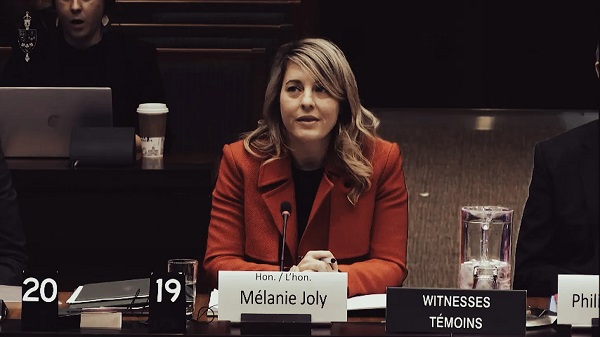Opinion
Britain’s Collapse Is Coming—How Long Until Canada Joins Them?
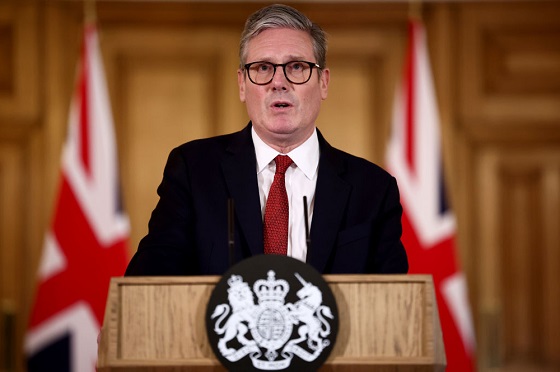
The Audit
The UK is said to be in some trouble these days. Assessing the extent of the trouble might depend on who you ask. The pessimists insist that the country’s on the very brink of economic and social collapse.
The scent of chaos is strong and I’m sure having Keir Starmer in charge isn’t helping. Watching his face as he speaks leaves me with the distinct impression that the poor fellow is convinced that if he doesn’t say just the right words his blackmailers will do unspeakable things to his wife and children. At least that would explain the complete disconnect between his words and policies vs reality.
Personally, I’m not following developments that closely. I haven’t actually set foot in the UK for more than 40 years – and even then I don’t remember feeling all that welcome. But I am curious to know whether Canada’s own economic and social policies are driving us towards a similar dark fate.
This article by someone calling himself Mr. Star does a good job defining the pessimists’ perspective on the UK. Here’s a brief summary:
Fiscal & Economic Issues
- Triple-lock pensions drive unsustainable spending.
- Expensive welfare schemes (free cars for the disabled, disability benefits, social housing for foreign-born).
- NHS labeled inefficient and costly.
- ~$202B budget deficit projected for FY 2025.
- Wealthy individuals and companies leaving due to high taxes and uncertainty.
- Court rulings on “equal pay” destabilizing service sectors and bankrupting councils.
- Heavy debt burden; 25% inflation-linked, high interest costs from COVID-era QE.
- Economic stagnation; immigration used as a substitute for investment/productivity.
Immigration & Social Cohesion
- Large-scale legal and illegal immigration (small boat crisis).
- Grooming gang scandals and alleged cover-ups.
- Violent gang culture tied to migrant demographics.
- Frequent protests, riots, and rising racial/political polarization.
- Left-wing populist and Green-Islamist coalitions emerging in urban areas.
Social Inequality
- Severe North–South economic divide.
- Rising wealth inequality and eroded upward mobility.
- Housing affordability crisis.
Political & Institutional Dysfunction
- Weak governance and corruption in Westminster and Whitehall.
- Watchdogs (OBR) accused of misleading reporting.
- Bureaucracy focused on political cover-ups.
- No effective leadership or clear national vision; parties seen as inept.
I can’t confirm all of those claims, but they do give us a starting point for a conversation. Let’s see how Canada is currently holding up against such threats.
Canada certainly faces growing budget deficits, plenty of debt maintenance costs, and significant entitlement spending commitments. But those are nothing like the “triple-lock” pension payments and “quantitative easement” fallout that are hitting the UK. And our CPP is still actuarially sound.
It’s certainly true that recent second quarter GDP numbers here in Canada paint a grim picture of a contracting economy. But the UK’s general stagnation and evidence of an exodus of high-wealth citizens are in a league of their own. And so far at least, Canadian courts haven’t given us anything like the heavy handed wage controls that are so crippling for UK employers – both public and private.
The social pressures created by Britain’s high immigration rates (one percent per year) are scary. But Canada’s rate is probably even higher – although nearly all of that immigration is legal. The real tension in both countries is caused by the inexplicable fact that while public sentiment clearly prefers reductions in immigration rates, governments – the odd empty promise notwithstanding – seem determined to open the valves as wide as they’ll go.
For whatever it’s worth, institutional trust feels marginally higher here compared to what I’m hearing from the UK. But we’re still ruled by a federal party that was apparently preferred by only 29 percent of eligible voters. That’s hardly a ringing endorsement. Although it’s also hardly unique in the historical scheme of things.
Regional inequality (compare London vs the rest of the country to Ontario and Quebec vs Alberta) and urban housing affordability are pretty much equally destabilizing in both countries.
One area where things clearly haven’t deteriorated so badly here as in the UK is free speech. Last April, the Times of London reported that British police were arresting more than 30 people a day (that’s 12,000 a year) for “offensive” social media posts. There may be political forces in Canada pushing for this kind of totalitarian overreach, but they thankfully haven’t yet succeeded to that extent.
All that adds up to my tentative conclusion that Canada isn’t necessarily circling the same drain as the UK. We’re still in a position where turning things around is possible even in the absence of miraculous intervention.
Perhaps there’s hope.
Subscribe to The Audit.
For the full experience, upgrade your subscription.
Do you have colleagues or friends who might appreciate this?
Why not share the wealth:
Business
Mark Carney Seeks to Replace Fiscal Watchdog with Loyal Lapdog
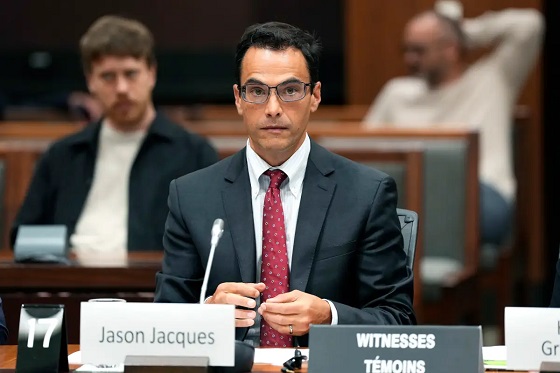
After scathing warnings from interim budget officer Jason Jacques, Liberals move to silence dissent and install a compliant insider with “tact and discretion.”
It’s remarkable, isn’t it? After a decade of gaslighting Canadians about their so-called “fiscally responsible” governance, the Liberal Party, now under the direction of Mark Carney, finally runs into a problem they can’t spin: someone told the truth. Jason Jacques, the interim Parliamentary Budget Officer, was appointed for six months, six months. And within weeks, he did something this government considers a fireable offense: he read the books, looked at the numbers, and spoke plainly. That’s it. His crime? Honesty.
Here’s what he found. First, the deficit. Remember when Trudeau said “the budget will balance itself”? That myth has now mutated into a projected $68.5 billion deficit for 2025–26, up from $51.7 billion the year before. Jacques didn’t just disagree with it. He called it “stupefying,” “shocking,” and, this is the one they hate the most, “unsustainable.” Because if there’s one thing Ottawa elites can’t handle, it’s accountability from someone who doesn’t need a job after this.
But Jacques didn’t stop there. He pointed out that this government has no fiscal anchor. None. Not even a fake one. A fiscal anchor is a target, like a deficit limit or a falling debt-to-GDP ratio—basic stuff for any country pretending to manage its money. Jacques said the Liberals have abandoned even that pretense. In his words, there’s no clear framework. Just blind spending. No roadmap. No compass. No brakes.
And speaking of GDP, here’s the kicker: the debt-to-GDP ratio, which Trudeau once swore would always go down, is now heading up. Jacques projects it rising from 41.7% in 2024–25 to over 43% by 2030–31. And what happens when debt rises and growth slows? You pay more just to service the interest. That’s exactly what Jacques warned. He said the cost of carrying the debt is eating into core government operations. That means fewer services. Higher taxes. Slower growth. The burden gets passed to your children while Mark Carney gives another speech in Zurich about “inclusive capitalism.”
And let’s talk about definitions. Jacques flagged that the Liberals are now muddying the waters on what counts as operating spending versus capital spending. Why does that matter? Because if you redefine the terms, you can claim to be balancing the “operating budget” while secretly racking up long-term debt. It’s accounting gimmickry, a shell game with your tax dollars.
He also pointed to unaccounted spending, about $20 billion a year in campaign promises that haven’t even been formally costed yet. Add that to their multi-decade defense commitments, green subsidies, and inflated federal payroll, and you’re looking at an avalanche of unmodeled liabilities.
And just to make this circus complete, Jacques even criticized the way his own office was filled. The Prime Minister can handpick an interim PBO with zero parliamentary input. No transparency. No debate. Just a quiet appointment, until the appointee grows a spine and tells the public what’s really going on.
Now the Liberals are racing to replace Jacques. Why? Because he said all of this publicly. Because he didn’t play ball. Because his office dared to function as it was intended: independently. They’re looking for someone with “tact and discretion.” That’s what the job listing says. Not independence. Not integrity. Tact. Discretion. In other words: someone who’ll sit down, shut up, and nod politely while Carney and Champagne burn through another $100 billion pretending it’s “investment.”
Let’s be clear: this isn’t just about replacing a bureaucrat. It’s about neutering the last shred of fiscal oversight left in Ottawa. The Parliamentary Budget Officer is supposed to be a firewall between reckless political ambition and your wallet. But in Carney’s Canada, independence is an inconvenience. So now, instead of extending Jacques’ term, something that would preserve continuity and show respect for accountability, the Liberals are shopping for a compliant technocrat. Someone who won’t call a $68.5 billion deficit “stupefying.” Someone who’ll massage the numbers just enough to keep the illusion intact.
They don’t want an economist. They want a courtier. Someone with just enough credentials to fake credibility, and just enough cowardice to keep their mouth shut when the spending blows past every so-called “anchor” they once pretended to respect. That’s the game. Keep the optics clean. Keep the watchdog muzzled. And keep Canadians in the dark while this government drives the country off a fiscal cliff.
But let me say it plainly, thank god someone in this country still believes in accountability. Thank God Jason Jacques stepped into that office and had the guts to tell the truth, not just to Parliament, but to the Canadian people. And thank God Pierre Poilievre has the common sense, the spine, and the clarity to back him. While Mark Carney and his Laurentian elite pals are busy gutting oversight, rewriting the rules, and flooding the economy with borrowed billions, it’s men like Jacques who refuse to play along. He looked at the books and didn’t see “investment”—he saw a ticking fiscal time bomb. And instead of ducking, he sounded the alarm.
Poilievre, to his credit, is standing firmly behind the man. He understands that without a real watchdog, Parliament becomes a stage play, just actors and scripts, no substance. Backing Jacques isn’t just good politics. It’s basic sanity. It’s the minimum standard for anyone who still thinks this country should live within its means, tell the truth about its finances, and respect the people footing the bill.
So while the Liberals scramble to muzzle dissent and hire another smiling yes-man with a resume full of buzzwords and a Rolodex full of Davos invites, at least one opposition leader is saying: No. We need a watchdog, not a lapdog. And in a city full of spineless bureaucrats, that’s not just refreshing—it’s absolutely essential.
Frontier Centre for Public Policy
Richmond Mayor Warns Property Owners That The Cowichan Case Puts Their Titles At Risk
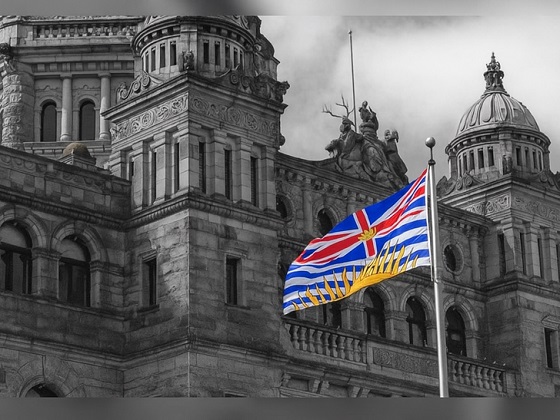
From the Frontier Centre for Public Policy
“For those whose property is in the area outlined in black, the court has declared Aboriginal title to your property which may compromise the status and validity of your ownership — this was mandated without any prior notice to the landowners,” said the letter to Richmond residents.
These are the words of the mayor of Richmond, BC, to Richmond property owners. In a Canadian first — and what might be the first of many such warnings to frightened property owners — the mayor is telling them that the titles to homes and businesses that they had purchased by dint of hard work and faithfully making mortgage payments over decades might be invalidated because an indigenous claimant, relying in part on ancient hearsay evidence, managed to convince a judge that equally ancient ancestors had once built crude structures and fished there.
The warning comes because of the Cowichan case.
In an alarming decision, a judge granted 2,000 Cowichan claimants Aboriginal title (AT) to part of the City of Richmond — worth an estimated $100 billion, or about $12.5 million per claimant. The decision is being appealed. However, it is based on the equally alarming case of Delgamuukw and the line of cases that followed it. Consequently, unless the Supreme Court of Canada (SCC) is prepared to reverse that decision, Canadian property owners can never again enjoy the certainty of property ownership that was bequeathed to us before Canada even became a nation. At best, Canadian property owners can only hope that their “junior” property rights will not come under attack by someone claiming a “senior” constitutionally protected AT, based on something that might or might not have happened before Canada even became a nation.
Because the 1997 Delgamuukw decision changed property rights forever in Canada. Senior Ontario lawyer, Peter Best, describes what the SCC did in that case as a “revolution.”
Another way to describe what the unelected SCC Justices chose to do in 1997 is that they chose to sacrifice the certainty of Canadian property rights on the altar of “reconciliation.” From that point on, a Canadian property owner could no longer be certain that their title to property was permanent.
Henceforth, if an indigenous claimant, relying on ancient hearsay evidence no less, could satisfy a judge that their ancestors had the exclusive use of hunting or fishing lands in the distant past, an AT could be placed upon the title of a property owner today. In short, the property owner would be told that their “title” was not the permanent ownership they thought it was.
Few Canadians noticed this astounding decision, in large part because it concerned lands in a remote area of BC. But when the Delgamuukw-based Cowichan decision, which involved city land, was announced, property owners certainly took notice. They suddenly woke up to find that their property rights could be taken from them at the stroke of a judge’s pen.
They aren’t imagining the threat. In fact, they are alarmed to find themselves alone, fighting against a provincial government, a federal government, and the courts — all of which appear to be willing to sacrifice Canadians’ property rights to the apparent requirements of “reconciliation.”
Here’s an example. These Pender Harbour residents are not just alarmed. They are scared.
This brief article discusses the threat and what went wrong.
Those who live in dictatorships and own property can never be certain that homes and businesses they worked hard to buy won’t be suddenly taken from them. That’s exactly what happened in Cuba in 1959, when Fidel Castro seized power from Fulgencio Batista. I was reminded of this the other day when I rewatched Francis Ford Coppola’s masterful movie, Godfather II, and saw that revolution depicted on the screen.
Pandemonium reigned as most of Cuba’s once vibrant middle class was forced out of their own country. Their houses and businesses were simply confiscated by the Castro “revolutionaries.” Families who had acquired property by dint of generations of hard work suddenly found themselves with nothing. While many of the dispossessed rebuilt good lives in Miami and elsewhere, they will never regain their haciendas and businesses back home. The sad mess that is today’s Cuba is what a country, stripped of its middle class and property rights, looks like. That’s because the certainty of property rights is the backbone of any successful nation.
But none of what happened in Cuba could happen in a liberal democracy, like Canada, could it? We Canadians have always been sure that if we do all of the work and saving necessary to earn the down payment needed to buy a house; work hard to meet our mortgage, property taxes, and other fees; and spend the money necessary to maintain our property over the years — we will own “our” property forever. We can sell it, pass it on to our children, or live there until we die. Property ownership is forever in a country like Canada. No one — not even the government or the courts — can take it away from us. Right?
At least that’s what we thought. If you are one of those Canadians who still think that “ownership” means what you think it means, you need to start paying attention to what is playing out right now in British Columbia. Because the Cowichan case — directly based on Delgumuukw — decides otherwise. The trial judge concluded that property rights can indeed be taken away from a rightful owner. A court can do that — on a claim based on hearsay evidence, no less. And not just hearsay evidence. Hearsay evidence that is seventh generation hearsay. In one fell swoop, Canada became the first (and only) common law nation where a court can take away your title to your property based on a claim by someone in 2025 that a claimed ancestor of theirs told someone else something in 1846. But only if all the “someones” are indigenous.
Cowichan claimants convinced a judge that what some claimed ancient ancestor told another ancient ancestor in a blueberry patch, and all the way up to the present, was reliable enough to slap a constitutionally senior AT on top of the inferior “junior title” that everyone who had lawfully acquired the property from the previous owner thought they owned. So, if you own property in Richmond, BC, you are not being paranoid if you are alarmed by the decision. The mayor is quite right to warn scared residents that their titles are under threat.
And if you are a property owner — or rather thought you were a property owner — anywhere in what were formerly the Queen Charlotte Islands, but has now suddenly become the new nation, or tribal nation, of Haida Gwaii, you might also want to know that an indigenous claimant and their lawyers can meet with one judge in private — with absolutely no notice to you — and have their newly acquired AT — courtesy of the courts and the Eby government — made into a constitutional right that is now “senior” to your “junior” unprotected right that you thought was your inviolable title to your property. A title that might have taken a lifetime of work to acquire.
So, if you are a BC resident, you should be alarmed. And what starts in BC doesn’t necessarily stay in BC. It is assumed by many that AT will have no effect in the areas of Canada covered by treaties. However, the signing of those treaties only started in 1870. What about tribes, such as the Assiniboine, who had been displaced by treaty signing tribes, such as the Ojibway, before 1870? This and other creative AT claims will undoubtedly be argued before judges as receptive to radical indigenous claims as the Cowichan trial judge.
This is obviously a simplified description of a very complicated topic. Volumes have been written by lawyers and others about the Delgamuukw case where AT and the line of cases built on it originated. Brilliant lawyers, like Dwight Newman, Geoffrey Moyse, Barry Kirkham, and Peter Best, as well as many writers, have already written reams about the Cowichan case.
But don’t be fooled by politicians or Indian chiefs telling you that they are not claiming private property at this time.
Because if their claims are accepted, that means the government had a defective title from the outset, that means your title is just as defective. They can go after your title any time they care to. As mentioned, the City of Richmond is warning residents that the Cowichan case puts their ownership in doubt. They are not being paranoid — they are letting residents know the truth — the courts are playing fast and loose with property rights in their single-minded pursuit of “reconciliation.”
Richmond and Haida Gwaii are most likely just the beginning of what is going to happen throughout BC, and eventually all of Canada. BC has hundreds of Indian bands that all want variations of what has been awarded to the Cowichan band in the Cowichan case, and to the Haida, by the double-teaming of the Eby government and our courts. This appears to be “Land back” at work. The Eby government and BC courts now appear to be actively working together — engineering “constitutional” declarations privately, for example — in the dismantling of rights to private property to fit their vision of reconciliation. Here is an article on the subject by the David Suzuki Foundation. To them, it makes perfect sense that huge parts of Canada should simply be “handed back” to claimants, simply because they are indigenous. The Eby government, with the courts’ cooperation, appears to be doing exactly that.
As mentioned, it all began with the Delgamuukw case in 1997 — decided by a SC determined to put “reconciliation” ahead of every other consideration. That is the case that decided — against all logic, common sense, and case law that had been built up for a thousand years — that ancient hearsay evidence can be reliable enough to remove title from a property owner and give it to an indigenous claimant. And that indigenous hearsay evidence is somehow reliable, while all other hearsay is not.
To quote senior BC lawyer, Barry Kirkham:
“In the entire history of the common law first hand hearsay evidence is deemed inadmissible because hearsay is unreliable. Delgamuukw held that in support of a claim for Aboriginal title, the courts must allow Indian witnesses to give seventh generation hearsay evidence to establish facts as to land they occupied in 1846. There is no basis in law, logic, or justice to justify this astounding claim, and there is no reason why hearsay evidence from Indians should be an exception to a rule that governs every other litigant. The SC justified this singular exception to the rule against hearsay evidence by reasoning, “There is no other means by which the Indians can prove their case.” A clear instance of a court inventing a rule to produce a particular result, which is the exact opposite of what a court should be doing and is doing in virtually all other cases.”
So, how can seventh generation indigenous hearsay be reliable when even first generation non-indigenous hearsay is considered inadmissible because it is unreliable?
The answer is clear: It can’t be.
To Kirkham again:
“The Indians had no written language and created no documents or records and had no formal education system. How can hearsay evidence from such a system be so much more reliable than non-Indian hearsay, which is inadmissible, despite facts being recorded in documents and taught through a highly developed educational system, where students are a captive audience for several hours a day for many years.”
The truth is that indigenous oral histories are no more or less reliable than the oral history of any other pre-literate people. There might have been a Moses, who led his people from ancient Egypt. Perhaps there was something that happened at the Red Sea that helped them escape. But any judge who stripped a property owner of their titles in 2025, based on their belief that Moses parted the Red Sea that day, would be considered quite mad. Similarly, anyone who believes that every detail of a story supposedly told in a blueberry patch long before Canada even became a country can be accurately recounted by a self-interested claimant today many generations later is deluded.
Proof of what I am saying can be found in the Cowichan case itself. The Cowichan claimants recited their oral history in court, but so did the two opposing tribes, the Musqueam and Tsawwassen. Not surprisingly, all three oral histories differed. All three favoured the groups claiming them to be true. Of course, they did. It was “their” oral history. There is simply no such thing as an oral history, or fable, that doesn’t favour the group that believes it.
The Cowichan trial judge made the arbitrary decision that the Cowichan oral history was accurate, and the two other conflicting indigenous oral histories were not accurate. The correct decision was to find that none of the oral histories were reliable enough to decide something as precise as title.
That’s because oral histories — including indigenous oral histories — are inherently unreliable. They are just stories that have been told and retold — and subtly changed with each retelling. The fact that they are told by indigenous people is neither here nor there.
In both Delgamuukw and Cowichan, we see judges trying to rectify what they see as historical errors made by our forefathers. While these instincts might be well-intentioned, the fact is that remaking Canada is not the courts’ job. Elected representatives and/or constitutional discussions might remedy these perceived injustices, but playing fast and loose with both the clear rules of evidence and what is supposed to be the certainty of property rights are clear examples of judicial overreach.
This problem of judicial overreach is made exponentially worse by the fact that some of the most expensive law firms in the country are actively working on these AT and “duty to consult” claims all across the country. Perversely, the enormous fees come from the very property owners — the taxpayers — targeted by these increasingly creative legal claims.
Many of the very lawyers doing this work eventually become judges hearing those claims. This unholy alliance of chiefs, lawyers, and activist judges is rapidly depleting Canada’s embattled treasury and destabilizing the country. All this is made worse by crusading politicians, like former Prime Minister Justin Trudeau and Premier David Eby.
Attempting to appease the unappeasable 1-2% of the Canadian population who live on Indian reserves by impoverishing and stripping property from the productive 98% in the name of “reconciliation” is a fool’s errand. Decades of enormous public expenditure and “reconciliation” have certainly made many people rich but have done nothing to move the dependent indigenous underclass up the ladder.
There are many other reasons as well why the Delgamuukw and Cowichan are wrongly decided, including the obvious fact that the concept of “title” was foreign to a warrior culture, where stronger tribes had displaced weaker tribes for thousands of years. But the decision to use seventh generation hearsay, only because it comes from indigenous claimants, is the fundamental flaw that must be corrected. The SCC has put property rights in peril and must restore the sanctity of property rights in Canada. It must fix the mess it has created.
The SCC in Delgamuukw set off the multiple claims for AT all over BC and now in other parts of Canada. It is largely responsible for starting what looks like the carving up of that province into racial enclaves, beginning with Haida Gwaii. It incentivized Indians to think of themselves first as members of their “First Nation” and only second as Canadians. In their pursuit of reconciliation, the SCC inadvertently promoted indigenous separatism — the exact opposite of what our highest court should do. And now it is putting in peril a system of property rights that originated in 1066. It would be hyperbolic to say that the justices initiated the unravelling of Canada, but a Canada without certainty of title is not a Canada worth saving. Quebec and Alberta sovereignists have taken note.
The tragedy is that none of this was supposed to happen. In 1982, when constitutional talks were underway, our senior premiers campaigned to have property rights constitutionally protected. That didn’t happen because of the intervention of NDP leaders, like Ed Broadbent, who insisted for their own ideological reasons that Section 35 (which recognizes existing Aboriginal and treaty rights) must be included, but property rights must remain out of the document.
Because originally there was no such thing as Section 35 in the original draft of what the premiers were asked to sign. It was rather suddenly inserted into the mix by some of the same clever people who managed to nix constitutionally protecting property rights.
But even then, the senior premiers, such as Alberta’s Peter Lougheed and Manitoba’s Sterling Lyon, refused to sign — fearing exactly the type of judicial activism that gave rise to Delgamuukw and Cowichan. Only when they were assured by Trudeau and Chretien personally that if the word “existing” was placed before “Aboriginal rights” future Supreme Courts would not even think of expanding aboriginal rights as they existed in 1982 did they sign.
But those senior premiers came to regret what they had done. The assurances given by Trudeau and Chretien turned out to be worthless. They had been snookered. In Delgamuukw, the SCC blatantly disregarded the clear intent of the senior premiers and invented brand new law — AT — by declaring that ancient hearsay evidence could be used by indigenous claimants to establish title to property.
But those senior premiers, like the Fathers of Confederation before them, would have been positively horrified to see what an activist SCC and feckless politicians, like Eby, are doing to the country as a whole. Carving up the country into racial enclaves, like Haida Gwaii, encouraging Indians to think of themselves as members of a tribe, instead of as Canadians, is exactly what Canada was not supposed to be. Our forefathers envisioned a Canada rid of tribalism, where everyone was equal in law, not the “patchwork of tiny Bantustans” — maybe better called UNDRIPia — that is emerging today.
It will be years before the SCC will rule on the Cowichan appeal, and hopefully do a major rethink of what their predecessors launched in 1997 with Delgamuukw. In the meantime, the uncertainty that the courts have created with AT (and their equally damaging creation — “duty to consult”) will cost Canadians dearly. The Canada that was known will continue to unravel.
But Canadians who have worked hard to buy their homes and businesses will not sit idly by while their titles are taken from them. The SCC must reverse what Peter Best calls their “revolution” or they will foment a revolution of a different kind.
Brian Giesbrecht is a retired judge and a senior fellow at the Frontier Centre for Public Policy.
-

 Environment2 days ago
Environment2 days agoThe Myths We’re Told About Climate Change | Michael Shellenberger
-

 Crime2 days ago
Crime2 days agoCBSA Bust Uncovers Mexican Cartel Network in Montreal High-Rise, Moving Hundreds Across Canada-U.S. Border
-

 COVID-192 days ago
COVID-192 days agoSpy Agencies Cozied Up To Wuhan Virologist Before Lying About Pandemic
-
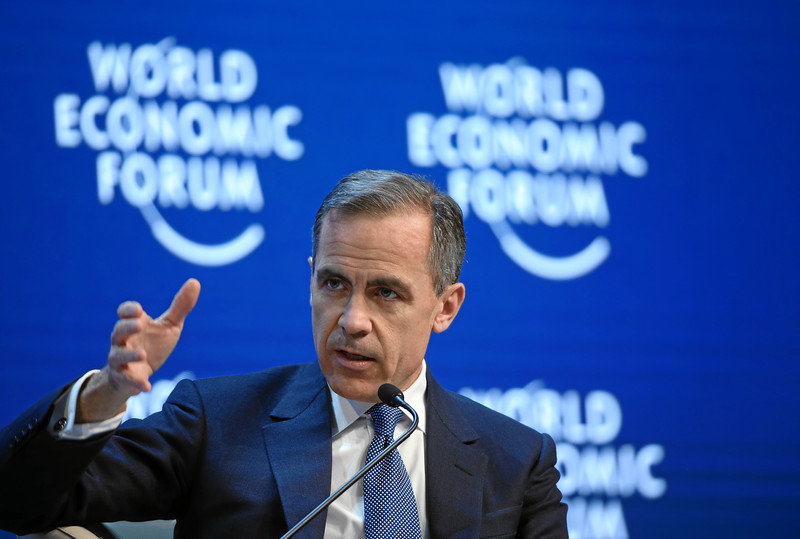
 Business2 days ago
Business2 days agoCarney and other world leaders should recognize world’s dependence on fossil fuels
-

 armed forces2 days ago
armed forces2 days agoWhy we keep getting Remembrance Day wrong
-

 Alberta1 day ago
Alberta1 day agoMark Carney Has Failed to Make Use of the Powerful Tools at His Disposal to Get Oil Pipelines Built
-
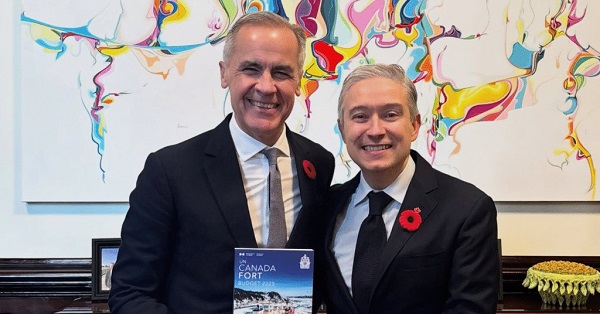
 Business24 hours ago
Business24 hours agoCarney shrugs off debt problem with more borrowing
-

 armed forces2 days ago
armed forces2 days agoWhat A Second World War Aircraft Taught Me About Remembrance Day









